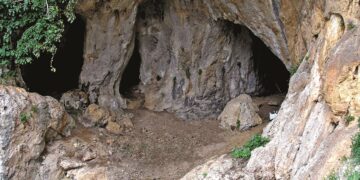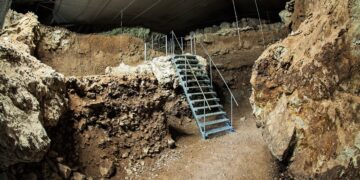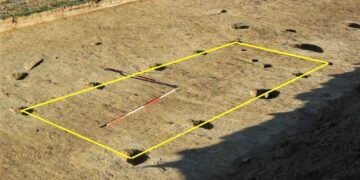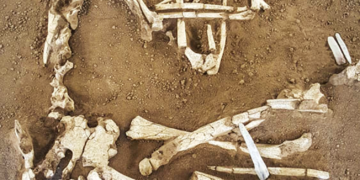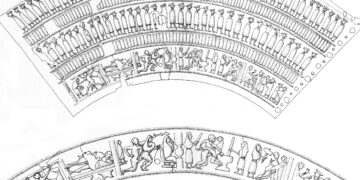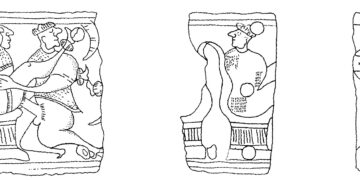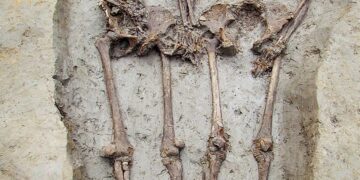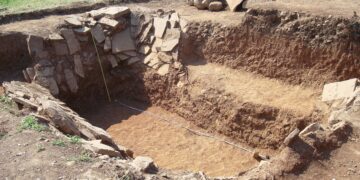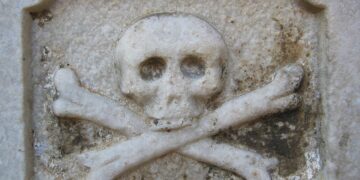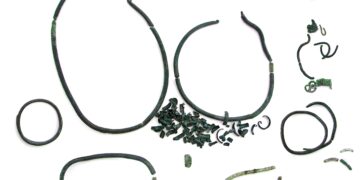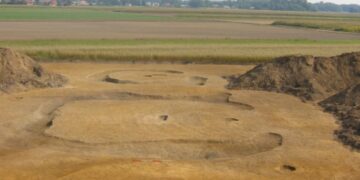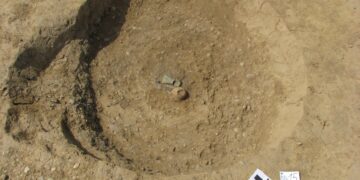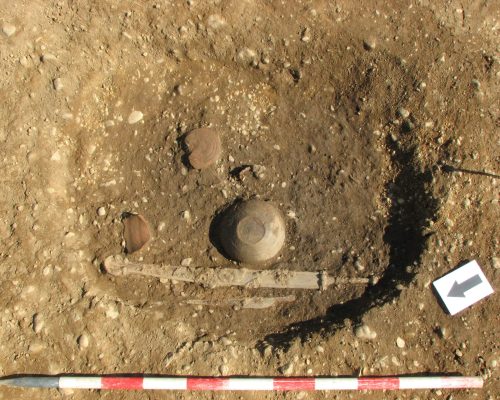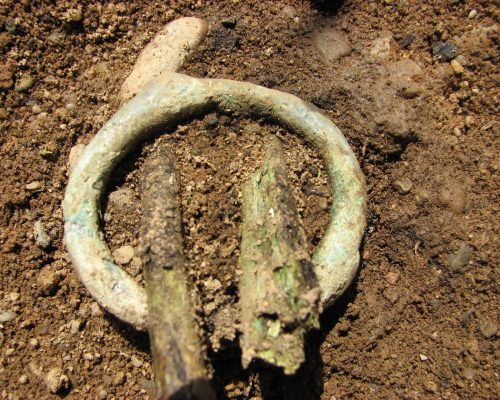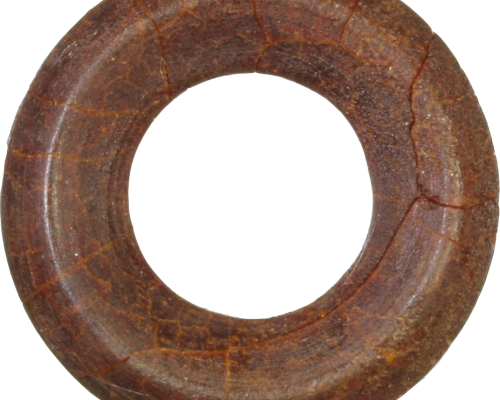Burial practices are normally tied to long-standing traditions and are were not discussed in ancient societies. They were linked to the opinions of what is moral to do with the deceased – to cremate and transform the body as soon as possible or inhumate it and prolong the process of transformation. The treatment of the dead body and the performance of rituals are actions derived from cultural norms and beliefs about the body and the deceased. The grave architecture and the grave goods, as well as the rite of the deposition itself, were the reflection of the investment the society invested into the deceased.
In grave 4 in Srednica in Eastern Slovenia the inhumation of a young lady from the 4th century BC was discovered – it is the oldest Celtic grave discovered in Slovenia. Actually, only several bones of her arm and teeth were preserved, the rest was dissolute due to acidic soil. However, what was important was a large set of jewellery and attire that accompanied her into the grave. Iron and bronze fibulae, iron and bronze bracelets, bronze ankle rings and a belt set, but most important the amber ring around her neck indicated that she was special for her community. It was not the richness of her grave goods, but their diversity and composition that suggested that she came from the Pannonian Plain – most probably from the territory around the bend of Danube. Presumably, she was the keeper of old traditions that led her small community to the west and settled on the territory of today’s Slovenia.

